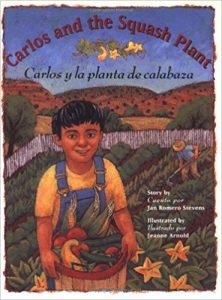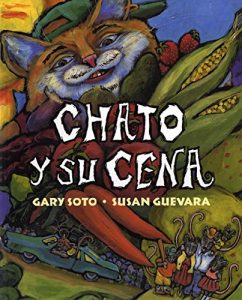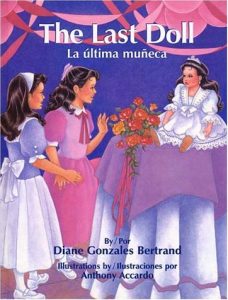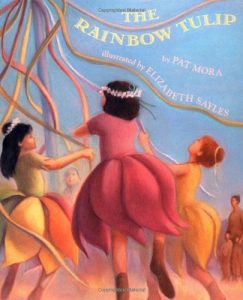 Having ignored his mother’s warnings about what will happen if he doesn’t bathe after working on his family’s New Mexican farm, Carlos awakens one morning to find a squash growing out of his ear.
Having ignored his mother’s warnings about what will happen if he doesn’t bathe after working on his family’s New Mexican farm, Carlos awakens one morning to find a squash growing out of his ear.
United States
Materials from United States of America
Chato Y Los Amigos Pachangueros

This lively tale of a party-loving barrio cat who throws a surprise celebration for his friend Novio Boy. With a lively text, bold art, and a setting and theme with Latinx flavor, this is an ideal choice for Spanish readers.
Orson Blasts Off!
 What’s a megabyte-loving kid to do when his computer breaks? BLAST OFF! Join Orson and his sidekick, Weasel, on a hair-raising adventure where they touch the North Pole…watch the eye of a storm wink…and fall through a black hole in outer space. Readers (but maybe not their parents!) will be amazed at what can happen when a creative kid is forced away from his computer screen. Raúl Colón’s picture book is filled with delicious word-play and all the fun of a comic book.
What’s a megabyte-loving kid to do when his computer breaks? BLAST OFF! Join Orson and his sidekick, Weasel, on a hair-raising adventure where they touch the North Pole…watch the eye of a storm wink…and fall through a black hole in outer space. Readers (but maybe not their parents!) will be amazed at what can happen when a creative kid is forced away from his computer screen. Raúl Colón’s picture book is filled with delicious word-play and all the fun of a comic book.
On The Texas Trail Of Cabeza De Vaca
Chato Y Su Cena
 To get the “ratoncitos,” little mice who have moved into the barrio, to come to come to his house, Chato the cat prepares all kinds of good food: fajitas, frijoles, salsa, enchiladas, and more. Wisely, the mice bring along a canine friend who ensures that Chato eats tortillas and not them for dinner.
To get the “ratoncitos,” little mice who have moved into the barrio, to come to come to his house, Chato the cat prepares all kinds of good food: fajitas, frijoles, salsa, enchiladas, and more. Wisely, the mice bring along a canine friend who ensures that Chato eats tortillas and not them for dinner.
La Fiesta Del Abecedario
The Alphabet Festival
The Last Doll/La última Muñeca
 The beautiful, but old-fashioned, Sarita sadly watches as her shelf-mates are purchased by eager shoppers and taken home. She looks out through the dust-covered plastic of her box, and she worries that she will be the last one. Every day she preens and puts her best porcelain face forward, but every evening, she remains on the shelf.
The beautiful, but old-fashioned, Sarita sadly watches as her shelf-mates are purchased by eager shoppers and taken home. She looks out through the dust-covered plastic of her box, and she worries that she will be the last one. Every day she preens and puts her best porcelain face forward, but every evening, she remains on the shelf.
Finally one day, a tall man in a black mustache decides that she is perfect, and that she absolutely must be the last doll for his godchild, Teresa, on her quinceañera. Sarita’s alarm at still being last quickly shifts to pride when she realizes that sometimes people save the best for last.
A Picture Book of Cesar Chavez
Extra! Extra!: Fairy-Tale News From Hidden Forest
 Presents articles, editorials and ads from the “Hidden Forest Times” that retell many well-known stories, including Jack and the beanstalk, Pinocchio, and the Tortoise and the Hare. When the residents of Hidden Forest wake up and open their morning papers, they are in for a surprise. When the residents of Hidden Forest wake up and open their morning papers, they are in for a surprise. An enormous beanstalk has mysteriously sprouted outside of Jack Blake’s house, and Jack is nowhere to be found. Meanwhile, Pinocchio and Half-Chicken have set out on adventures of their own, and Tortoise and Hare are off to the races. Will they all find their happy endings? Hidden Forest News has got the scoops. Written and laid out in newspaper format, this installment in the enchanting Hidden Forest series has received a new twist from Alma Flor Ada and Leslie Tryon.
Presents articles, editorials and ads from the “Hidden Forest Times” that retell many well-known stories, including Jack and the beanstalk, Pinocchio, and the Tortoise and the Hare. When the residents of Hidden Forest wake up and open their morning papers, they are in for a surprise. When the residents of Hidden Forest wake up and open their morning papers, they are in for a surprise. An enormous beanstalk has mysteriously sprouted outside of Jack Blake’s house, and Jack is nowhere to be found. Meanwhile, Pinocchio and Half-Chicken have set out on adventures of their own, and Tortoise and Hare are off to the races. Will they all find their happy endings? Hidden Forest News has got the scoops. Written and laid out in newspaper format, this installment in the enchanting Hidden Forest series has received a new twist from Alma Flor Ada and Leslie Tryon.



